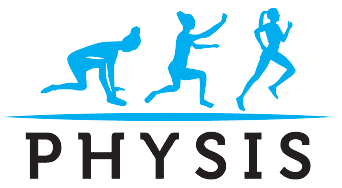As a physical therapist, I often see patients with limited mobility in their thoracic spine. The thoracic spine is the middle part of the spine, consisting of twelve vertebrae that connect the cervical spine (neck) to the lumbar spine (lower back). The thoracic spine has movements into flexion, extension, lateral flexion and rotation. The thoracic spine is connected to the ribs, forming the ribcage. Its function is to provide stability and protection to critical organs such as lungs, heart and diaphragm. As a result of its attachments to the ribs and the sternum, the thoracic spine generally has less mobility compared to the cervical or lumbar spine. This is compounded by the fact that our lives are generally sedentary and a large portion of the time is spent sitting. This region of the spine is often overlooked in training but is critical for maintaining good posture, breathing, and overall movement. In this blog, I will explain how improving thoracic spine mobility can change your life.
Better Posture
As our lives are increasingly comfortable, we are trading it by being increasingly sedentary. Prolonged sitting and generally poor posture can lead to various health issues, including back pain, headaches, and breathing problems. The thoracic spine plays a crucial role in maintaining good posture. When you slouch, your thoracic spine rounds forward, which can cause tension and pain in the neck and shoulders. However, by improving thoracic spine mobility, you can maintain good posture, which can alleviate tension and pain in the upper body. Some common exercises to improve thoracic spine mobility to combat poor posture are thoracic spine extension, thoracic spine rotation exercises and bird dogs.
Improved Breathing
The thoracic spine is also essential for proper breathing. The thoracic spine along with the ribs form the ribcage, housing critical organs including the diaphragm. When you take a deep breath, the diaphragm drops and the lungs expand allowing for more air to enter your lungs. To create space for lungs the chest wall expands and the thoracic spine extends. Limited mobility in the thoracic spine leads to restricted breathing causing shortness of breath, fatigue as reduced oxygen is received by the lungs and even anxiety. By improving thoracic spine mobility, you can increase the range of motion in your ribcage and breathe more efficiently, leading to increased energy levels and reduced stress. Some common exercises to improve thoracic spine mobility to improve breathing is focusing on deep breathing, cat/camel stretch, thoracic spine lateral flexion and side lying thoracic spine rotation stretch.
Enhanced Sports Performance
Athletes require flexibility and strength in all areas of their bodies, including the overlooked thoracic spine. The thoracic spine is attached to the shoulder through the shoulder blade. Force generated with the thoracic spine rotation is critical in successful and powerful movements at the shoulders and the arms. Arm dominant sports like golf, tennis, pitching and throwing require this force from thoracic spine rotation for efficient, successful and powerful execution. A stiff thoracic spine can limit rotation, leading to decreased power and performance. Further, it increases compensation at the arms increasing the risk of shoulder, elbow and wrist injuries. Even, leg dominant sports like running require thoracic spine rotation because of the reciprocal movements of arms and legs. By improving thoracic spine mobility, athletes can increase their range of motion, allowing for greater power and precision in their movements. Some common exercises to improve thoracic spine mobility for athletes is thoracic spine rotation stretches in sidelying, cat/camel stretch and bird dogs.
Reduced Risk of Injury
The thoracic spine works in correlation with surrounding joints like the scapulae, shoulder, neck and core. Movements are accomplished by combined work of body segments that provide stability and others that provide mobility. Mobility at the thoracic spine is key for successful completion of movements as the scapulae and the core provide the stability. Limited thoracic spine mobility results in compensation at the stable segments like the scapulae and core increasing the risk for injuries. Ultimately, the stiffness of the thoracic spine can lead to strain and overuse injuries. By improving thoracic spine mobility, you can reduce the risk of injury and prevent chronic pain from developing.
In conclusion, the thoracic spine is an often overlooked but critical part of the spine that plays a vital role in maintaining good posture, breathing, and overall movement. By improving thoracic spine mobility through exercises and stretching, you can experience numerous benefits, including better posture, improved breathing, enhanced sports performance, reduced risk of injury, and an overall improved quality of life.
Physis physical therapy can play an important role in your care and help you regain thoracic spine mobility, improve sports performance and reduce risk of injuries. Our therapists are your partners in care to achieve your goals. Call us 212-706-7480 or reach out to us on info@physisrehab.com.



Comments are closed